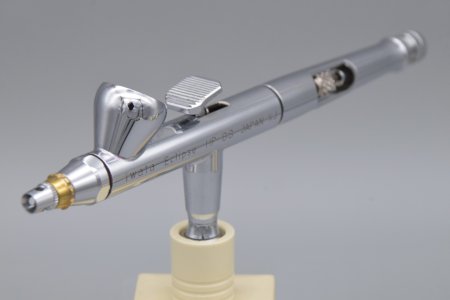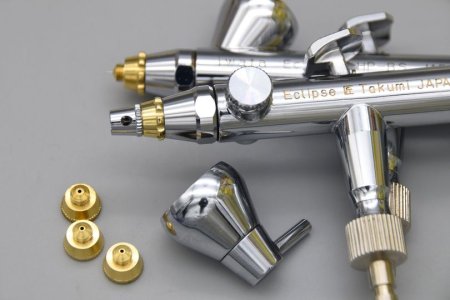Here are a few examples - I use a collet chuck to hold the raw material to start each piece. For my holding fixtures I try to do all the hole drilling and threading at one time, without removing the work piece from the chuck. If you are single point threading on the lathe, then it is no issue also cutting reference flat on the piece for locating later with an indicator. If you are using a die stock or tap, it is a bit harder - as you will need to make an opposing threaded piece that can be threaded on or in to use for locating later. If at all possible, it is easier to do single point threading when trying to keep things concentric.
Here for a nozzle (or air) cap - First steps on this are to do the inside. I drill to depth and contour the inside of the nozzle surround, thread the ID to fit the brush body threads, and drill the exit bore. Doing all of these steps without moving the piece greatly increases the chances of keeping concentricity. The OD of this piece during this stage would have been full diameter of the raw material. I generally take a skimming cut of the OD while the piece is still help to make it concentric with the ID, too.
View attachment 88346
View attachment 88342
View attachment 88343
The holding fixture is inserted into the four jaw independent lathe chuck. An indicator is set up with the tip on a pre-cut reference surface on the fixture. This area needs to be cut at the same time the fixturing piece is held for the threading operation - so that it is 100% concentric with the threads. The jaws are loosened and tightened until I get as little movement as possible on the indicator needle when rotating the piece.
View attachment 88344
The needle cap threads can now be cut in a manner that will keep them concentric with the center bore of the nozzle cap. This method is more accurate than a collet chuck, as there will always be some runout associated with the collets. By using an indicator to center the work in the 4 jaw, you cut the runout at least in half if you take your time setting up.
View attachment 88345


